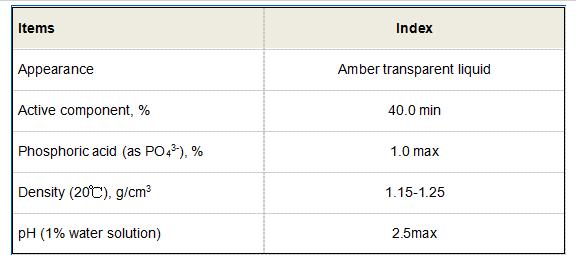Flocculant Agents for Effective Water Treatment Solutions and Applications
Flocculant Chemicals for Water Treatment An Essential Tool for Clean Water
In the realm of water treatment, the role of flocculant chemicals is paramount. Water pollution poses significant risks to public health and the environment, necessitating effective methods for purifying water sources. Flocculants are chemical agents that aid in the aggregation of suspended particles in water, facilitating their removal in treatment processes. This article explores the importance of flocculants, their types, mechanisms, and their applications in water treatment.
Understanding Flocculants
Flocculants are typically high molecular weight compounds that can be natural or synthetic. They work by promoting the clumping or agglomeration of tiny particles that can otherwise remain suspended in water. When added to water, these chemicals neutralize the charges on particles, allowing them to come together to form larger aggregates known as flocs. Once formed, these flocs can be easily separated from water through sedimentation, flotation, or filtration.
Types of Flocculants
There are primarily two categories of flocculants organic and inorganic.
1. Organic Flocculants These are predominantly synthetic polymers such as polyacrylamides and polyamines. They are effective in a variety of applications, especially in municipal wastewater treatment and industrial processes. Natural organic flocculants, like starch and chitosan, are also gaining popularity due to their biodegradability and low toxicity.
2. Inorganic Flocculants Common inorganic flocculants include aluminum sulfate (alum) and iron salts. These have been traditional choices for water treatment plants due to their efficiency and cost-effectiveness. However, they may have limitations in specific situations, such as when pH levels vary significantly.
Mechanisms of Action
flocculant chemicals for water treatment

The effectiveness of flocculants relies on a few key mechanisms charge neutralization, bridging, and adsorption.
- Charge Neutralization Many suspended particles possess charges that keep them apart. Flocculants can neutralize these charges, reducing repulsion and allowing particles to come together.
- Bridging Once particles have been neutralized, flocculants can physically connect multiple particles through their polymer chains, forming larger aggregates that can rapidly settle out.
- Adsorption Flocculants can also adsorb onto particles, altering their surface properties and promoting aggregation through increased van der Waals forces.
Applications in Water Treatment
Flocculants are used in various water treatment applications, from municipal wastewater treatment to industrial processes, and even in drinking water purification. In municipal systems, they help in removing suspended solids, bacteria, and other contaminants, resulting in cleaner effluent. For industries, flocculants can aid in the recycling of water by removing impurities, thus enhancing the longevity of water supplies.
Moreover, flocculants are crucial in the mining and coal industries, where they assist in separating particulates from water used in processing ores. Their use in these sectors highlights their versatility and importance in sustainable resource management.
Conclusion
Flocculant chemicals are essential in modern water treatment technologies. Their ability to enhance the removal of suspended particles significantly contributes to the production of cleaner water, essential for both human consumption and environmental health. With ongoing advancements in flocculant technology, including the development of more efficient and environmentally friendly options, these chemicals will undoubtedly remain a cornerstone in the effort to combat water pollution and ensure safe and sustainable water resources for the future.
-
Pbtc Scale InhibitorPBTC: A Scale Protector for Industrial Water TreatmentNewsAug.05,2025
-
Organic Phosphonate: An Efficient Defender in the Field of Scale InhibitionNewsAug.05,2025
-
Hydrolyzed Polymaleic Anhydride: Green Pioneer in Scale Inhibition FieldNewsAug.05,2025
-
PAPEMP Polyamino Polyether Methylene Phosphonic Acid For SaleNewsAug.05,2025
-
Flocculant Water Treatment: A Pioneer in Purification in the Field of Water TreatmentNewsAug.05,2025
-
Benzyl Isothiazolinone: An Efficient and Broad-Spectrum Antibacterial Protective GuardNewsAug.05,2025





